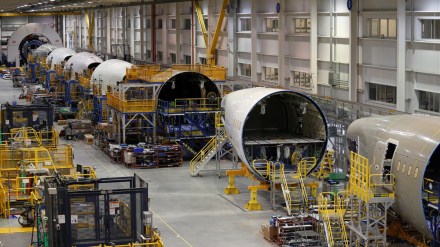The possibilities of assembling a civilian passenger aircraft in the country are definitely a policy priority of the government. This objective appears within striking distance with Airbus inking an agreement with the Tata Group to manufacture the H125 helicopter from its civilian range in the country. The two companies had earlier decided to build the C-295 military transport aircraft, which entails purchasing a certain number of aircraft in a flyaway condition and the rest to be assembled in Vadodara.
India thus will be the sixth location where Airbus will operate its final assembly lines besides France, Germany, US Canada and China. At the foundation ceremony of the Tata Airbus C-295 aircraft manufacturing facility in Vadodara in end-October 2022, Prime Minister Narendra Modi stated that India would soon be manufacturing big passenger aircraft proudly bearing the words “Made in India”. The policy intent in this regard has gathered momentum after the historic fleet acquisition plans of the Tata Group’s flagship carrier Air India and Indigo.
Towards this end, civil aviation minister Jyotiraditya Scindia met with Airbus Global CEO Guillaume Faury with the aim of bolstering India’s position in global aviation. The minister underscored India’s status as one of the fastest-growing economies and emphasised the nation’s commitment to the Make in India flagship initiative.
With a focus on self-reliance and indigenous manufacturing, India envisions itself as a potential global hub for aircraft production. The meeting with Airbus’ CEO aligns with this vision, as collaborative efforts on civilian helicopters and C-295 military transport aircraft will create a manufacturing ecosystem that could propel India into the final assembly of civilian planes. This is perhaps an idea whose time has come as India’s fleet requirements are pegged at 2,000 in the next 15 years.
While the higher level of policy ambition is to be welcomed, the process will take more time and strategic intent to bear fruition. Airbus and Boeing have so far resisted the policy pressures for civil final assembly lines, citing the critical mass of their investments in engineering, supply chain and maintenance in the country.
Boeing sources $1 billion in products and services from the country and has announced a plant in Hyderabad to convert its 737 passenger planes into dedicated freighters to cash in on the e-commerce boom. The big question is what is the demand that Airbus and Boeing are looking at to undertake final assembly? If a final assembly line is justified if it turns out 5 to 10 aircraft a month and there is overall demand for 120 a year, then the massive domestic fleet expansion orders indicate that the time is right.
Persuading them to set up shop in India calls for greater strategic intent. If the H125 helicopter and C-295 deals are taken as exemplars, there is a warrant to similarly reconfigure the historic fleet orders by domestic airlines to ensure that a certain proportion is finally assembled here. Otherwise there is no deal. An equally efficacious option is to use the evolving ecosystem to assemble an indigenously designed civilian passenger aircraft that is truly Made in India But this will take a lot of time—perhaps more than a decade—and substantial resources like the Chinese single-aisle C 919 incurred as it debuts at the international airshow at Singapore next month.
